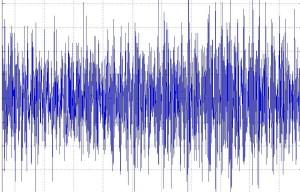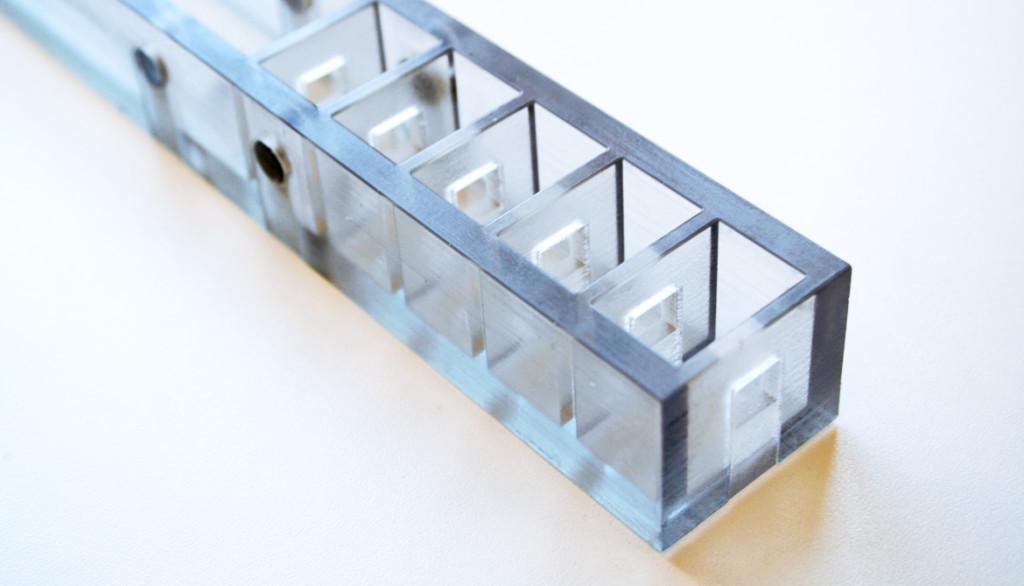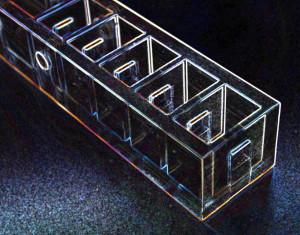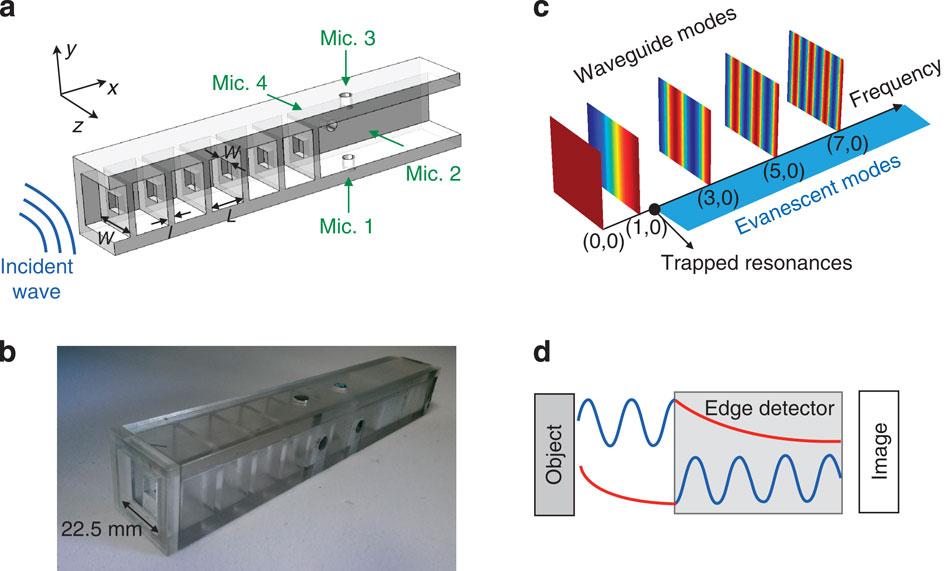 The concept of sound edge detection is the basis for commonly used technologies like ultrasound or sonars. Essentially, a sound is emitted at a specific frequency and then a machine detects when and where that sound comes into contact with a solid object. Depending on the application, the edge detection can create a general shape and location of solid objects, or be fine-tuned to differentiate between types of material depending on how the sound interacts with it. Most of us have had a doctor use an ultrasound machine on us or someone in our family at some point in our lives, and we regularly use them to monitor babies as they develop in the womb. But ultrasound machines are also regularly used to monitor aircraft support structures and railroad tracks for microscopic fissures. And of course we often use sonar to map the seabed or track the movements of sea life.
The concept of sound edge detection is the basis for commonly used technologies like ultrasound or sonars. Essentially, a sound is emitted at a specific frequency and then a machine detects when and where that sound comes into contact with a solid object. Depending on the application, the edge detection can create a general shape and location of solid objects, or be fine-tuned to differentiate between types of material depending on how the sound interacts with it. Most of us have had a doctor use an ultrasound machine on us or someone in our family at some point in our lives, and we regularly use them to monitor babies as they develop in the womb. But ultrasound machines are also regularly used to monitor aircraft support structures and railroad tracks for microscopic fissures. And of course we often use sonar to map the seabed or track the movements of sea life.
In order to understand how reverberated sound detection works, and how it doesn’t work, it is important to understand what happens when sound hits a solid surface. When the sound collides with the edges of a solid object, they bounce off and create “evanescent waves” of sound that dissipate far quicker than the original sound wave. Because these secondary waves decay very quickly, they can only be measured under specific circumstances. Current methods of recording these waves are limited to the type of application and are susceptible to contamination by the original sound wave.
However, researchers at Switzerland’s engineering, science, technology, mathematics and management university ETH Zurich have developed a new method of differentiating very weak and short sound waves from longer, sustained sound waves. When the process is applied to acoustic imaging it can filter out most of the longer sound waves and only detect those that reflect off of an object’s edge. This allows the object to be quickly scanned in order to produce a simple outline of the object.
“This type of measuring method delivers similar results to the edge detection filter in an image-processing software, which allows the outline of prominent photo objects to be identified with the click of the mouse,” professor of mechanics and materials at ETH Zurich Chiara Daraio explained.
The device that makes this possible was 3D printed with a new polymer structure developed by ETH Zurich’s Miguel Molerón. The 3D printed structure helps to filter the different sounds correctly so only the relevant sound waves are detected. The structure is a square-shaped pipe which is divided into five connected resonance chambers joined by small windows between each section.
As the sound passes through the chambers the internal structure intensifies the short sound waves while the successive chambers filter the longer waves out. At the end of the structure a series of four microphones measure the transmitted sound. Because “evanescent waves” are only generated by the edges of an object, and only last for a short while, the polymer structure amplifies them until it is possible to single them out and generate an outline image of the object.
The researchers note that this system is not intended to generate fully detailed scans of an object but would be more useful when there is a need to capture as much information about an object as quickly as possible. Specifically in applications that scans materials for fissures or defects, where an object’s outline or edge is the only information required to verify the integrity of the structure. Currently this new sound detection method is simply a proof of concept and requires more research and refinement to determine what applications it is best suited for. The original experiments used audible sound, so the next step is attempting to adapt the process for the shorter wavelengths of ultrasound and other forms of inaudible sounds.
Discuss this story in the 3D Printed Edge Detector forum thread on 3DPB.com.
Subscribe to Our Email Newsletter
Stay up-to-date on all the latest news from the 3D printing industry and receive information and offers from third party vendors.
You May Also Like
3D Printing Unpeeled: New Arkema Material for HP, Saddle and Macro MEMS
A new Arkema material for MJF is said to reduce costs per part by up to 25% and have an 85% reusability ratio. HP 3D HR PA 12 S has been...
3D Printing News Briefs, January 20, 2024: FDM, LPBF, Underwater 3D Printer, Racing, & More
We’re starting off with a process certification in today’s 3D Printing News Briefs, and then moving on to research about solute trapping, laser powder bed fusion, and then moving on...
3D Printing Webinar and Event Roundup: December 3, 2023
We’ve got plenty of events and webinars coming up for you this week! Quickparts is having a Manufacturing Roadshow, America Makes is holding a Member Town Hall, Stratafest makes two...
Formnext 2023 Day Three: Slam Dunk
I’m high—high on trade show. I’ve met numerous new faces and reconnected with old friends, creating an absolutely wonderful atmosphere. The excitement is palpable over several emerging developments. The high...


































